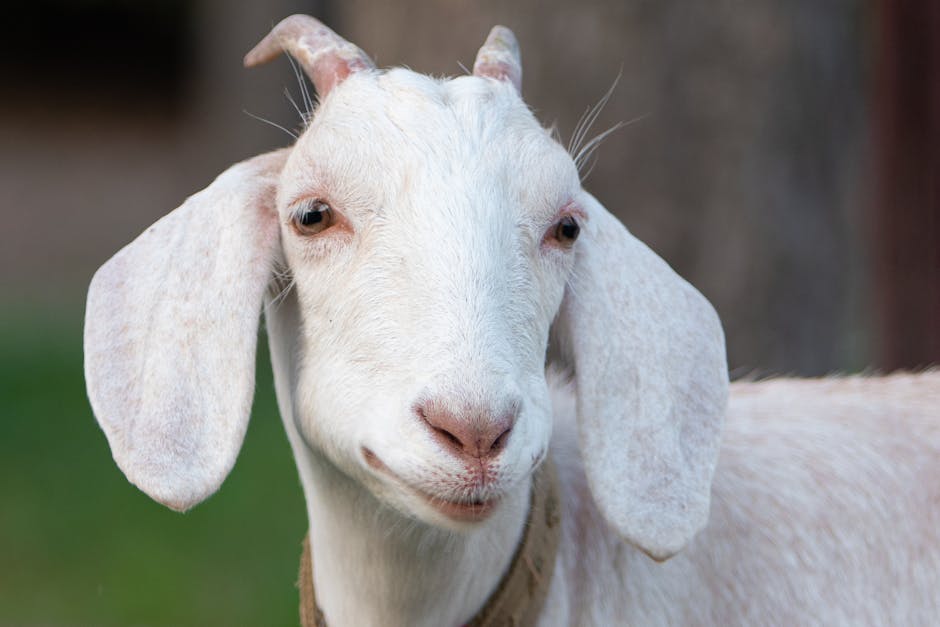The Role of AI in Yorkshire’s Agricultural Evolution
In Yorkshire, 85% of farmers now embrace AI technologies, a leap that’s revolutionised your interaction with the land. You’re steering tractors without touching the wheel and analysing crop health from your phone. You’re not just farming; you’re orchestrating a symphony of data-driven decisions.
As you delve into this article, discover how AI’s precision farming, autonomous machinery, and insightful analytics are shaping your agricultural future, making every yield more bountiful and sustainable.
Welcome to farming’s new era.
Key Takeaways
- AI has catalysed advances in agricultural practises in Yorkshire, revolutionising farming efficiency.
- Autonomous machinery integrated with AI has set new benchmarks for efficiency, reducing waste and increasing yield.
- Data analytics driven by AI optimise crop yields, resource management, and provide accurate yield forecasts for planning and supply chain optimisation.
- AI enhances livestock breeding and disease control, enabling early detection of diseases, continuous health monitoring, and informed decision-making for efficiency and sustainability.
Precision Farming Breakthroughs

In the realm of precision farming, AI has catalysed significant advances in Yorkshire’s agricultural practises. Sensor integration, a pivotal facet of this technological revolution, allows you to collect vast amounts of data from your fields.
Sophisticated sensors placed throughout your crops can measure soil moisture, nutrient levels, and much more, delivering a granular view of your farm’s health that was previously unattainable. These sensors are the eyes and ears on the ground, feeding real-time information into AI models that process and analyse the data with remarkable efficiency.
You’re no longer guessing when to water or fertilise; AI algorithms provide precise recommendations based on the comprehensive sensory input. This level of detail ensures that resources aren’t squandered, optimising yield while preserving the environment.
Moreover, AI’s weather prediction capabilities have become incredibly advanced. You can anticipate and mitigate the effects of adverse weather conditions with forecasts that are tailored to your exact location. By integrating hyper-local weather data, AI helps you make informed decisions that can shield your crops from the capriciousness of nature.
As you marvel at the sophistication of sensor integration and weather prediction, you’re about to witness how this technology dovetails with the deployment of autonomous machinery in action.
Autonomous Machinery in Action

You’ll quickly notice how autonomous machinery, seamlessly integrated with AI-driven insights, revolutionises the efficiency of daily farming operations. The fields of Yorkshire are now increasingly dotted with robot harvesters, their sophisticated AI brains making real-time decisions that were once the sole domain of human judgement. These machines don’t just perform tasks; they’re equipped with advanced sensor integration that allows them to understand and interact with their environment in unprecedented ways.
Imagine a robot harvester navigating through a field of wheat. Its sensors are constantly analysing crop health, soil conditions, and weather data. This isn’t just about replacing manual labour; it’s about augmenting human capabilities with precision and consistency that can only be achieved through technology. These autonomous agents can work around the clock, under conditions that would be challenging or even hazardous for humans, all while reducing waste and increasing yield.
The results? You’re looking at a transformation in agricultural productivity. With these AI-powered machines, farmers in Yorkshire are setting new benchmarks for efficiency. They’re not just keeping pace with global agricultural standards; they’re pushing the boundaries, ensuring that the region remains at the forefront of the agricultural revolution.
Data-Driven Crop Management

Harnessing the power of data analytics, you’re optimising crop yields and resource management in Yorkshire’s fields with unprecedented accuracy. The integration of sophisticated data models and sensors enables you to make informed decisions that directly affect the productivity and sustainability of your agricultural practises.
Consider these critical capabilities enabled by data-driven crop management:
-
Real-time Soil Analysis: By continuously monitoring soil conditions, you can tailor fertilisation to the precise needs of your crops, reducing waste and enhancing growth.
-
Smart Irrigation Systems: Implementing AI-driven irrigation allows you to apply water when and where it’s needed, minimising usage while maximising crop health.
-
Pest Prediction Models: Leveraging historical data and current observations, you’re able to predict pest outbreaks and intervene proactively, safeguarding your crops with minimal chemical intervention.
-
Yield Forecasting: Predictive analytics provide accurate yield forecasts, ensuring you can plan for market demands and optimise your supply chain logistics.
Your role as a custodian of the land is now empowered by AI, where smart irrigation and pest prediction aren’t just concepts but daily tools in your arsenal. This technical proficiency is reshaping agriculture in Yorkshire, making it more resilient and ready for the challenges of tomorrow.
AI’s Impact on Livestock Rearing

As you integrate AI into your agricultural practises, the rearing of livestock in Yorkshire is undergoing a similar transformation, with technology enhancing everything from breeding to disease control.
AI’s contributions to animal health are vast, with predictive analytics enabling the early detection of diseases, which in turn reduces the spread and severity of outbreaks. Through continuous monitoring of health indicators, AI systems alert you to any anomalies in behaviour or physiology that may indicate illness, ensuring swift intervention.
Moreover, AI proves indispensable in breed optimisation. Machine learning algorithms analyse vast datasets, including genetic information, to identify traits that predict superior productivity, resilience to disease, and overall well-being. By selecting the best candidates for breeding, you’re able to cultivate livestock lines that aren’t only more profitable but also better adapted to the challenges of modern farming.
This integration of AI into livestock rearing empowers you with real-time data, leading to informed decision-making that elevates the efficiency and sustainability of your operations. As you continue to embrace these advancements, Yorkshire’s agricultural landscape is set to benefit from healthier herds and a more robust, future-proof industry.
Future Prospects for AI Agriculture

Building on these advancements in livestock rearing, you’re now poised to explore how AI will shape the future of agriculture in Yorkshire, from crop management to supply chain optimisation. The potential is vast, and the wheels are already in motion. Here’s what’s on the horizon:
-
Smart Irrigation Systems: AI-driven smart irrigation promises to revolutionise water usage. By analysing weather forecasts, soil conditions, and plant needs, these systems can optimise water delivery, reducing waste and improving crop yields.
-
Autonomous Tractors and Drones: With AI at the helm, autonomous vehicles and drones will conduct fieldwork with precision, from planting to harvesting, further reducing the need for manual labour and increasing efficiency.
-
Genetic Algorithms for Crop Improvement: AI can analyse genetic data to predict plant traits that will thrive in Yorkshire’s climate. This biotechnological approach could lead to more resilient and productive crops.
-
Supply Chain and Market Prediction: AI can process vast amounts of market data to forecast supply and demand trends, enabling smarter, more profitable farming decisions.
These tools aren’t just pipe dreams; they’re the tangible future of Yorkshire’s farms. As you delve deeper into what AI has to offer, you’ll find that it’s not just changing the landscape—it’s helping you cultivate a smarter, more sustainable future for agriculture.
Frequently Asked Questions
How Does AI Address the Specific Challenges Faced by Yorkshire’s Diverse Topography and Climate in Agricultural Practises?
You’re leveraging AI to tackle uneven terrain and unpredictable weather, using crop monitoring for precision agriculture and livestock management to increase efficiency and yield despite Yorkshire’s challenging agricultural conditions.
What Measures Are Being Taken to Ensure the Ethical Use of AI in Agriculture, Particularly Regarding Job Displacement and Data Privacy?
You’re navigating a maze of ethical frameworks, ensuring AI regulation keeps pace with innovation. Measures like impact assessments and privacy safeguards are your compass, preventing job loss and data misuse in the agricultural sector.
How Is AI Integrated Into the Education and TrAIning of New and Existing Farmers in Yorkshire to Ensure They Can Effectively Use These Technologies?
You’ll find AI integrated through smart classrooms and precision teaching, enhancing your capabilities to harness tech. This tailored education ensures you’re at the forefront, proficient in cutting-edge tools for modern farming practises.
What Are the Environmental Implications of AI Adoption in Agriculture, and How Is It Helping Yorkshire Farmers Achieve SustAInability Goals?
You’re sowing seeds of change with AI; precision agriculture minimises your environmental footprint. AI’s crop monitoring sharpens sustainability, steering you towards greener practises and healthier yields in your farming pursuits.
How Is AI Being Used to Support the Traditional Farming Methods and Cultural Heritage of Yorkshire’s Agricultural Community?
You’re leveraging AI to bolster traditional farming techniques, ensuring heritage preservation. This tech integrates with age-old practises, enhancing efficiency while maintaining Yorkshire’s rich agricultural legacy with a blend of innovation and cultural respect.
Conclusion
As you stand amidst Yorkshire’s rolling fields, you can almost hear the hum of autonomous tractors working in harmony with nature. Precision farming, with its data-crusted roots, is blossoming, transforming each acre into a testament to efficiency.
AI’s tendrils reach deeper, nurturing livestock with a knowing touch. The horizon gleams with potential, a canvas for innovation where AI weaves green and gold threads into the rich tapestry of agriculture’s future.
This is the dawn of a smarter farming era.
Contact us to discuss our services now!
